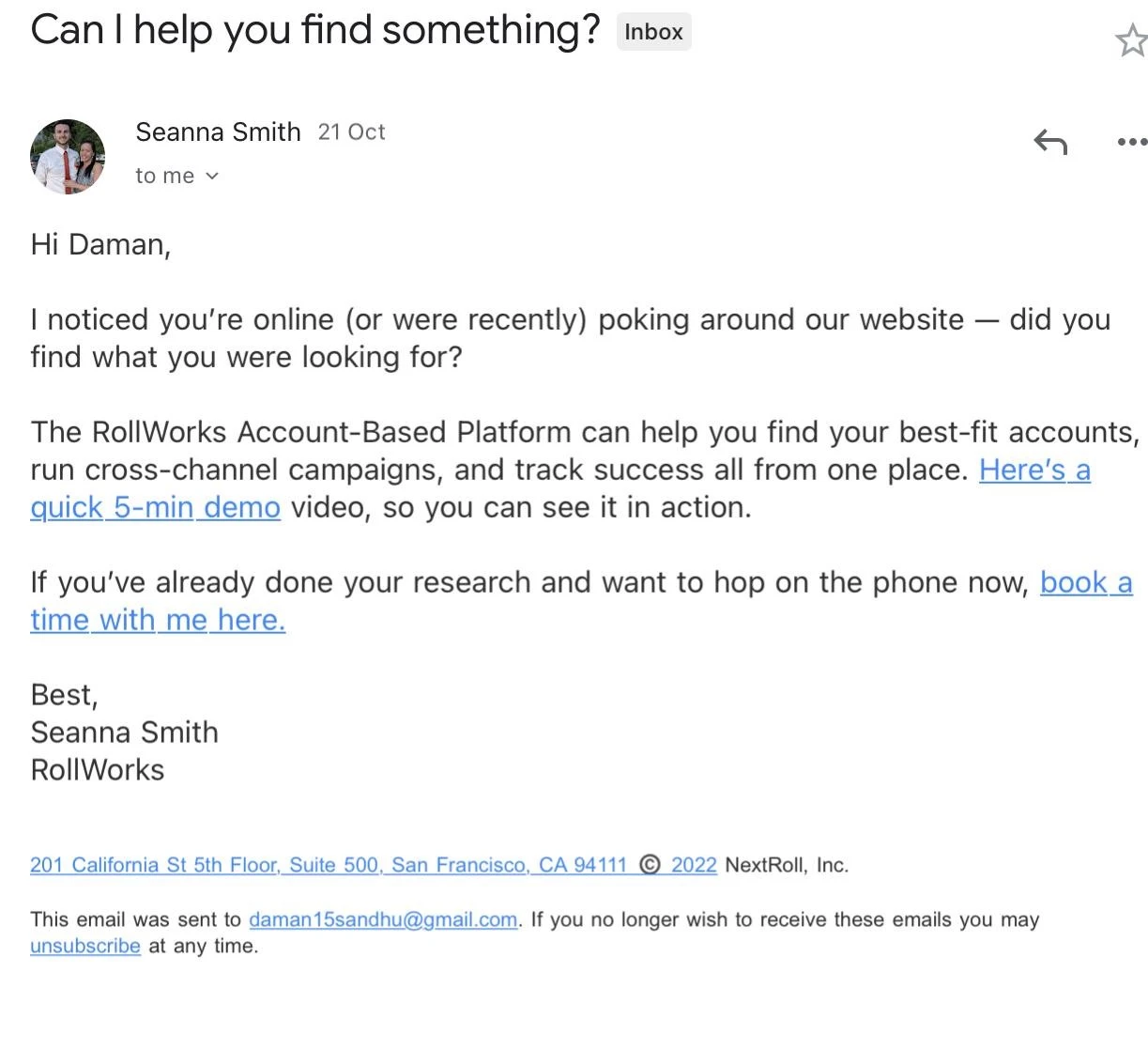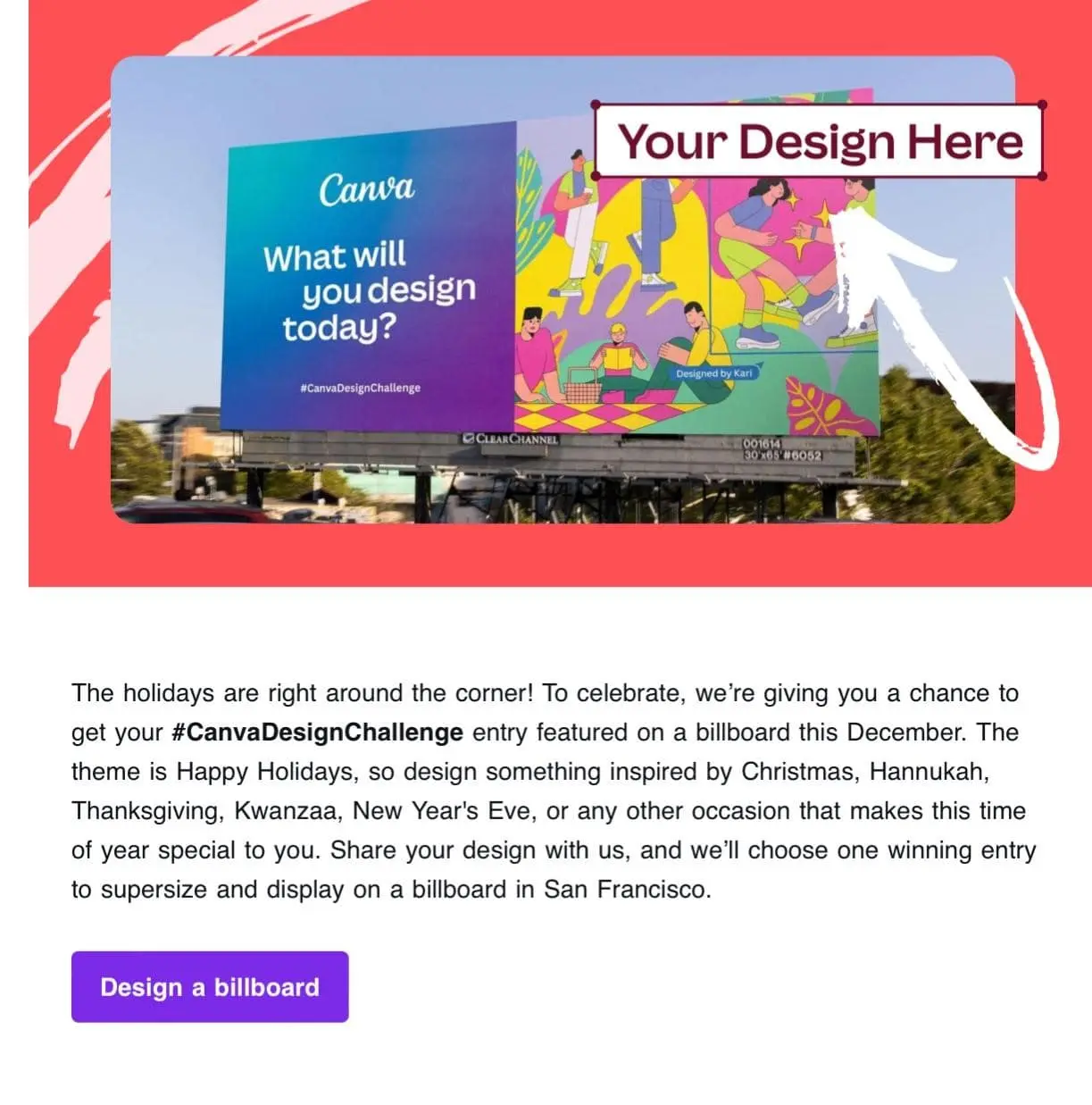
Introduction
Email marketing is the golden digital marketing strategy. It lets you reach 4 billion email users worldwide.
But sending an email to your subscribers and expecting them to take action is the wrong move. Jeff Kear, Co-Founder / Head of Sales & Marketing at Planning Pod, said, “It takes 3-4 emails to hear back from a lead.”
That means you need to send a string of messages to your leads to get a response. In other words, you need to plan a drip marketing campaign to nurture your potential customers.
But what is a drip marketing campaign? How can I run one for my SaaS brand? What are the best drip campaign tools, types, or examples?
Well, hold your horses, people! Just scroll down to learn all about SaaS drip marketing campaigns.
What is a Drip Marketing Campaign?
Drip marketing refers to sending a stream of marketing messages (usually via email) to prospects, leads, and customers, to stimulate conversion. This process is usually coordinated with the help of marketing automation software. The long sales cycle experienced in SaaS buying and selling makes drip marketing integral in keeping prospects focused on your offering throughout your engagement with them.
The question, “How do I sell my SaaS product?” comes up quite often when discussing SaaS marketing. Although SaaS is different from other business models, your SaaS marketing efforts should begin with growing traffic. The rationale is that you cannot send emails if you don’t have an email list. You can embark on drip marketing campaigns only after growing traffic and your email list.
Why Do SaaS Companies Need to Plan Drip Email Campaigns?
Do you know that 15.8% of all emails end up in the spam folder? That means your email message might not even reach your audience.
But, when you send a series of messages, there might be a chance that your email gets delivered to the right folder and the recipient even read it.
But that is not the only job of drip emails. These campaigns can help to:
Boost your engagement rates
SaaS drip emails can help to increase your engagement rate. Since the variation of messages is sent at regular intervals, it ensures you stay in constant touch with your leads.
You can start a conversation and learn more about your leads or subscribers. It can help you customize emails targeting individual contacts’ needs. You can deploy account-based email marketing to deliver your
SaaS product messaging.
Nurture leads
Drip marketing campaigns allow you to educate and guide your leads through their buyer’s journey. It is an excellent way for SaaS businesses to introduce their complex products.
Drip emails enable you to use various visuals and content formats to continually educate your leads until they are ready to purchase.
Enhances customer retention
SaaS drip marketing campaigns also work post-sales. It enables you to upsell or cross-sell solutions based on your customer’s preferences.
Moreover, you can constantly provide value to your customers. It helps to build a relationship with customers and nurture a personal bond with them.
Higher ROI
SaaS companies can segment email addresses into different groups to launch personalized marketing campaigns.
For example, you can segment your email list based on location, gender, age, or other bifurcations. Then, you can design a drip campaign targeting each group to boost your email ROI.
Reactivate dormant subscribers
There must be some subscribers in your list who haven’t engaged with your emails in a long. You can run a special drip campaign to reactivate them.
However, if the subscriber shows no interest even after your efforts, it is ideal for dropping that account. It can clean your subscribers’ list. Importantly, you can only focus on the potential accounts.
What Makes a Good Drip Email Campaign?
For a drip email campaign to work, it should:
- Target the right person
- Contain the right message
- Be sent at the right time
A properly executed lead generation campaign can increase sales opportunities by 20% on average. However, once the difficult part is done, you can set your campaign and leave your automation software to do the rest. Better yet, to avoid dropping the ball, you can outsource Lead generation services especially if you are tied up managing other areas of your business.
That said, follow these steps to create your campaign:
1. Choose a Lead Magnet
First, identify and create a lead magnet that will help you to fulfill your marketing objectives. For instance, if you want to educate, will a webinar or eBook do? If you want to encourage purchasing, how about a free trial? Set up your forms to capture new emails at every stage of the marketing funnel.
2. Sync Your Systems
Running email campaigns on fragmented systems can be a nightmare. Even after you capture all those leads, you will need to segment them for better targeting and retargeting. The segments you create will determine how and to whom you target your emails.
3. Create Your Emails
Experiment with text-based and HTML emails as both will drive interaction in different ways. If you want to create a personal feel, use text-based email. If you want more graphics and a professional feel, use HTML emails as they can carry graphics and links that can lead back to your content.
Send emails every two to four days, over the course of a month.
As your drip marketing campaign draws nearer, you will need to send an exit email, to tell your prospects that your offer will be ending soon. This email should create urgency and a feeling of scarcity. Consider including a limited-time offer to encourage immediate action. With the exit email, you are basically telling your prospects that they will miss their chance if they don’t buy right away.
How Drip Campaigns Fit in the Customer Purchase Journey
Email drip marketing involves delivering the right content to the right recipient at the right time based on how a user interacts with your brand and where they are in the sales cycle.
This means being able to determine a prospect’s position with regards to making a purchase decision. Marketer Joanna Wiebe describes the “Five Stages of Awareness” every person moves through on their way to purchase. These include:
Unaware. In the first stage, buyers are unaware. They don’t fully understand their pain or that a solution exists. The right content will make them better articulate their pain point and move them to the second stage.
Pain aware. In the second stage, thanks to your content, they know they have a problem and thy start looking for a solution.
Solution aware. The third stage is the solution awareness stage. By now, your audience knows that a solution exists. However, they have not yet zeroed in on a specific solution provider.
Product aware. At this stage, they know about your product. They are also actively looking at competition. Positive reviews, and helpful content are helpful factors to help them make their decision.
Most aware. Finally, the audience gets to a point where they have decided on a specific product. They know that you, and not the competition, are the answer to their pain. At this point, they will sign up for a trial, give you contacts for a sales call or make a purchase.
Below are 5 types of drip emails that will nudge your audience through the 5 stages of awareness. Prospects coming out of the “most aware” stage are qualified leads.
1. Activation
Before you start sending out emails, you have to account for the fact that a good percentage of visitors to your site will be problem unaware. As well, just because someone visits your site doesn’t mean that you should try to convert them; some people just aren’t a great fit. Given these two considerations, if you use the same strategy on everyone, you will annoy quite a number of visitors.
Your approach: Segment everyone coming to your site, and score all leads. By so doing, you can:
- Target ideal buyers with nurturing campaigns. For example, an enterprise customer who is highly engaged with your content is a likely candidate for a free trial. They have great potential for conversion.
- Use content to build goodwill and educate visitors who are not ready to convert (those with a lower lead score).
Activation emails (the email you send on initial contact with a prospect when they first visit your site) is a great way to segment your audience. Within that email, you could ask visitors:
The answers they provide will give you a better idea of where they are in the five stages mentioned above.
Note: Each activation drip email should include a call-to-action asking subscribers to try out your service. More importantly, it should address your lead’s core challenges and offer a solution.
2. Onboarding Email
We have talked about the important role that email plays in segmenting audiences. The other important role is: easing buyer’s remorse. Buyer’s remorse is an all-too-common phenomenon; feelings of anxiety or disappointment that a product or service does not live up to its expected performance tend to creep in after purchase. Often, buyer’s remorse leads to churn.
To prevent this, after your customers purchase, send an onboarding email not only to welcome them to your product, but to also remind them why they bought from you in the first place. Show them how your product will solve their problem. As well, guide them on their user journey. For instance, after your welcome line, say something like, “Before you begin, watch this short video to get more acquainted with our product”.
The entire tone of your email should be to remind customers that choosing you was the right decision.
3. Upsell Emails
Churn is an inevitable outcome for all businesses. Customers may fail to renew their subscription for reasons such as:
- The product is taking too long to solve the problem
- They believe the competition has a better solution
- You closed the wrong customers
- Shifting financial priorities
- If the key users are no longer making use of your solution
- Product malfunction/underperformance
- Lack of customer service
While you may not be able to do much about reasons like financial decline of your customers, the other reasons boil down to one thing: providing good customer experience. Majority of businesses agree that good service provision is the key to driving customer loyalty and stable retention.
Once your retention is stable, focus on getting more revenue from your existing customers through upsells and cross sells, so that it exceeds what you are losing in churn. David Skok calls this “negative churn”.
Email is a great channel for boosting upselling efforts. Send emails to existing subscribers, asking them to sign up for a more premium service, or to pay for an annual subscription instead of a monthly subscription. Upsells usually have a cost-saving aspect attached to them. They also highlight the fact that the customer will get better for a lesser cost.
4. Churn Prevention
If customers are not using your product or service, they are likely to cancel on the next payment cycle. You can prevent this from happening by constantly reminding customers to interact with your service or product. For instance, every Monday, send an email highlighting one feature and how it adds value. Every invoice date, send them a testimonial email, showing how other customers are benefiting from using your product/service.
Emails that stack benefits prevent churn; take advantage of this at every stage of the funnel.
5. Reactivation
For a marketer, the fact that a customer has churned shouldn’t mean the end of engagement. With well-placed emails, you can reactivate customers who have churned and turn them into paying customers once again.
It is important to survey customers whenever they leave, to help you know how to address their issues. If for instance they didn’t find a certain feature useful, keep them in your mailing list and send them emails in future whenever there are feature updates. You can also email them about webinars and tradeshows when you have them planned.
types of Drip Campaigns (+ Drip Marketing Examples)
There is no restriction on what type of drip campaigns you can create. You can design Marketing Strategy for SaaS & Drip Marketing Campaigns for each stage of your SaaS sales funnel. However, here are the commonly used drip campaign types with examples for your ease.
Lead nurturing campaigns
Mainly, drip marketing campaigns are used to nurture potential leads. Sequence emails help companies connect with their potential customers and build relationships with them. You can create a nurturing campaign to know your leads and then send personalized email messages to them.
Grammarly is the best SaaS drip marketing example here. They send weekly performance reports to their existing customers, which help to build engagement and retain them. They also share offers and deals with their freemium subscribers to motivate them to become paid subscribers.

Welcome email campaigns
Welcome sequence emails are the best way to impress your new customers. You can share more information about your brand and warmly welcome your new users.
Welcome emails help to start a conversation with new subscribers and build a relationship with them.
This RollWorks welcome email is the best example for SaaS companies. This is a simple email with a clear call to action.
 The email helps to build personal relationships as it is sent from a personal account. Also, there is a meeting booking link, which helps to understand new users better and nurture them into your sales funnel.
Retention drip campaigns
Once you have welcomed a new user onboard, don’t let them just sit there. You must launch retention drip campaigns to engage and retain subscribers in your funnel.
You must create emails that motivate subscribers to use your solution. You can take a reference from the Canva email here.
The email helps to build personal relationships as it is sent from a personal account. Also, there is a meeting booking link, which helps to understand new users better and nurture them into your sales funnel.
Retention drip campaigns
Once you have welcomed a new user onboard, don’t let them just sit there. You must launch retention drip campaigns to engage and retain subscribers in your funnel.
You must create emails that motivate subscribers to use your solution. You can take a reference from the Canva email here.
They create unique challenges for their subscribers to encourage them to use their tool and create something amazing. Competition is the best way to make people excited about your solutions.
Engagement drip campaigns
Usually,
SaaS businesses use blogs or ebooks to keep subscribers engaged. Though, they are a great way to educate and provide value to your leads.
But, they don’t engage and motivate leads to take action. In that case, you can steal an idea from Semrush.

From an interesting email copy to hosting an event, this email shows how you can keep your professional subscribers engaged with your brand. It is a perfect way to build relationships and understand your customers.
5 Best Drip Marketing Tools to Smoothly Launch Your Campaigns
Automation is essential to launch successful email marketing campaigns. Tools are required to collect email addresses, design emails, segment subscribers, and more.
According to the Litmus State of Email Report 2021, automation is vital for drip campaigns, sending triggered emails, and segmentation.
At UnboundB2B, we use various tools to create and analyze drip campaigns. But our favorite ones are:
1. Snov.io
Snov.io is the best tool for building personalized drip email sequences. It allows you to control your prospects and workflow. You can save time and efficiently organize your outreach with this tool.
It also helps you automate follow-ups and establish coordination with your sales department. In addition, you can create custom email campaigns using a visual drag-and-drop campaign editor. You can also personalize your emails using seamless integration with NiftyImages, Hyperise, and Hippo Video.
2. HubSpot
HubSpot is a powerful marketing tool. It helps to capture leads and convert them. In addition, the software enables you to manage your customer and content to build email sequences without a professional designer’s or developer’s help.
It offers several free and paid email templates to personalize per your need. It can track, schedule, and integrate emails with tools like Zapier.
3. Mailchimp
Are you looking for a free email marketing tool? Then, you will not get a better option than Mailchimp.
The software has a free plan that allows you to send emails to up to 2,000 subscribers, with up to 10,000 monthly emails. It is perfect if you are just starting with drip marketing campaigns.
However, you must upgrade your plan if you want to leverage complete drip campaign features like time delays, conditionals, and more. Also, Mailchimp integrates with Zapier and other business automation solutions to launch smooth drip campaigns.
4. Flodesk
Flodesk is a simple and minimalist drip marketing tool. There is no learning curve or complex interface to deal with. Instead, the program has four simple, self-explanatory options — Emails, Forms, Workflow, and Audience.
The software also has a smaller number of prebuilt drip campaign templates. It has limited yet beautiful email templates for welcome sequences, lead magnets, and more. You can simply click on the blank canvas and create your email design using an easy drag-and-drop menu. It is a simple tool for non-designers and programmers.
5. ConvertKit
ConvertKit is the heavy lifting tool. This software is perfect for SaaS companies to fully control their email marketing. With this software, you can decide when and to whom to send your emails.
ConvertKit’s email sequences feature is also awesome. It enables you to segment your subscribers to decide which account can take action on your emails. The software also allows you to design landing pages, opt-in forms, and track your camping performance. Overall, it is the best drip marketing tool for entrepreneurs.
Conclusion
Drip emails play a significant role in lead nurturing and increasing conversion rates. Constant experimentation and A/B testing will help you find the right tone of email to use, the most effective wording, length of email, the best intervals for sending, and days or time of day with the highest click-through rates.
Setting up and sustaining a drip marketing campaign is no easy feat. It requires discipline, patience, flexibility, the right tools, and the right level of expertise to pull it off. If you fall short on either of these qualities or are having difficulty defining your campaign objective, consider using UnboundB2B lead generation services.
We have a vast email database to find the suitable account to run your drip marketing campaigns. We also use several tools and strategies to ensure that you receive ROI from your email marketing efforts. To know more, get in touch with our team anytime.
Our blog
Latest blog posts
Tool and strategies modern teams need to help their companies grow.

Personalization functions as the vital foundation for executing B2B marketing effecti...

Beat your competitors and exceed your revenue goals this year by shifting your focus ...

SaaS growth has never been more challenging. SaaS companies must move faster and smar...





